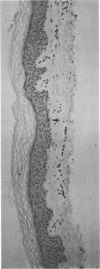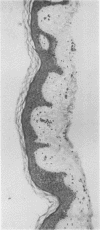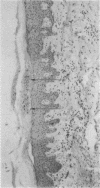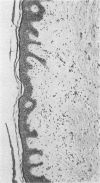Abstract
A highly significant, but unanswered, question in the pathogenesis of psoriasis relates to how normal appearing and diseased skin can coexist, undergo spontaneous flares and remissions, and yet appear to be genetically acquired. A plausible explanation for these disparate observations is that there is a basic defect in epidermal proliferation of skin of subjects with psoriasis and that disease expression is governed by other host factors. To address this question, we compared epidermal proliferation of skin involved and uninvolved with psoriasis with normal skin before and after transplantation to congenitally athymic (nude) mice, a biologic milieu free of humoral factors unique to the donor host. Results demonstrated that (a) before transplant, synthesis of DNA by the epidermal cells from skin uninvolved and involved with psoriasis is significantly higher than normal, 1.6 and 3.6 times, respectively; (b) 6 wk after transplantation, synthesis of DNA by epidermal cells is unchanged for normal skin, increased for uninvolved skin, and decreased for involved skin. These increases and decreases are of such a magnitude that at 6 wk the number of epidermal cells synthesizing DNA per 1,000 basal cells is identical, and is 2.2 times that of normal skin. When removed from the milieu of the afflicted host, skin involved and uninvolved with psoriasis appear equally "diseased." These data support the notion that there is aberrant epidermal proliferation in skin of patients with psoriasis and that host factors appear to play a role both in the expression and nonexpression of this disease.
Full text
PDF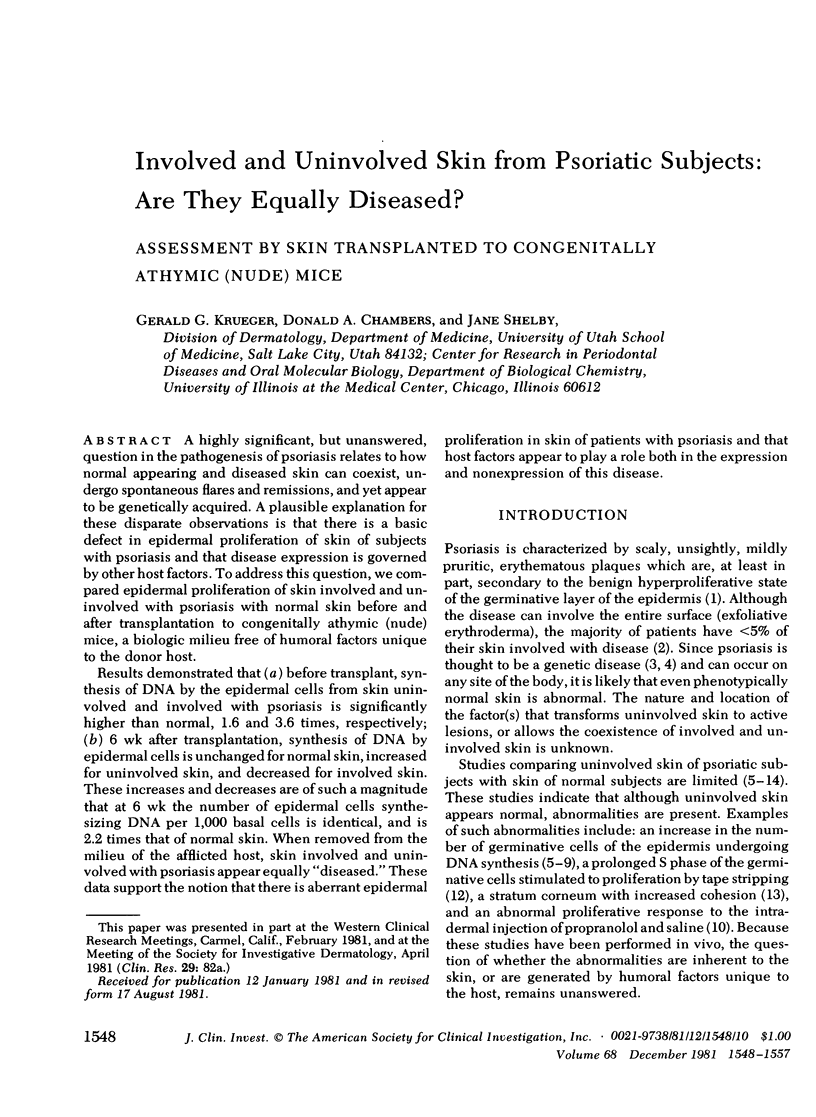
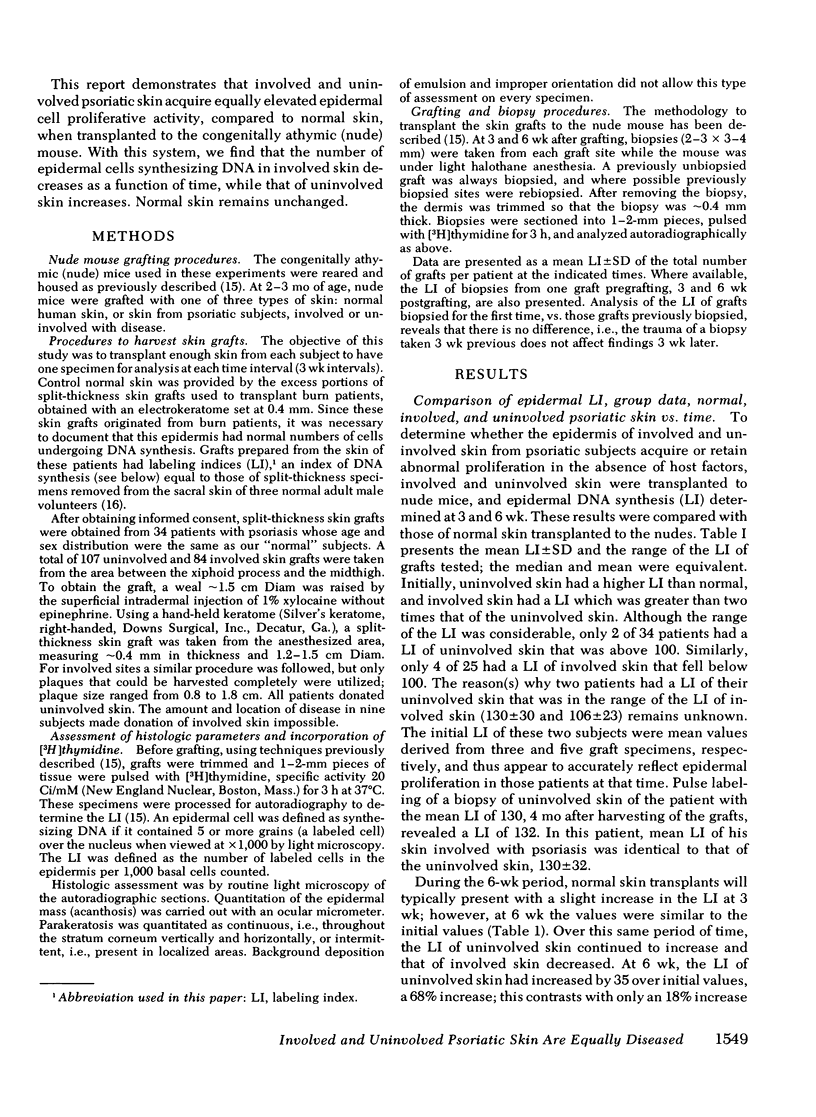
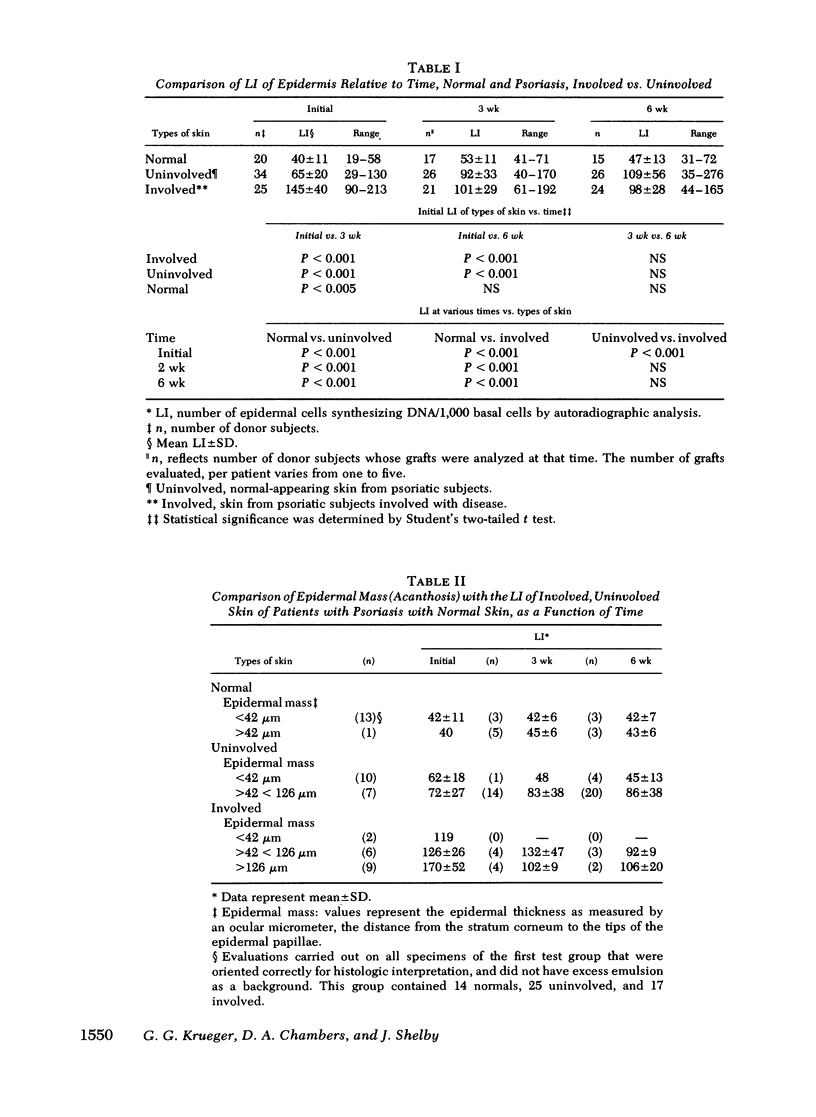
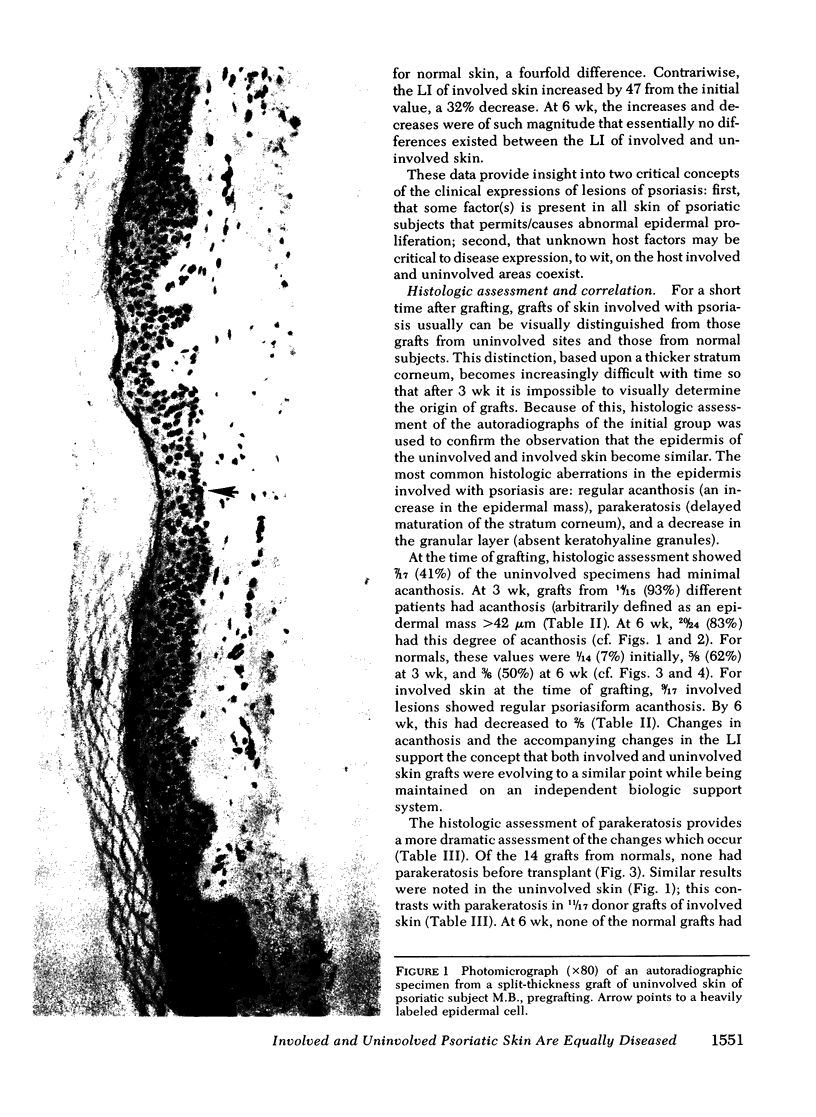
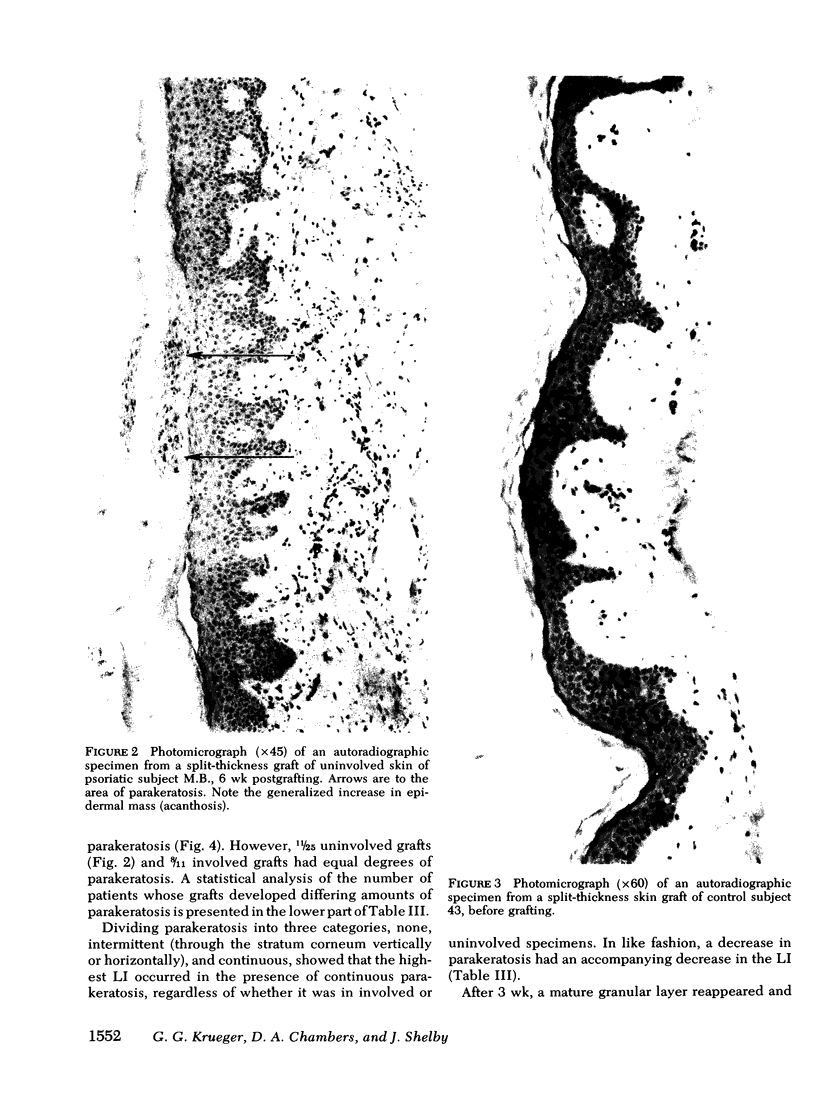
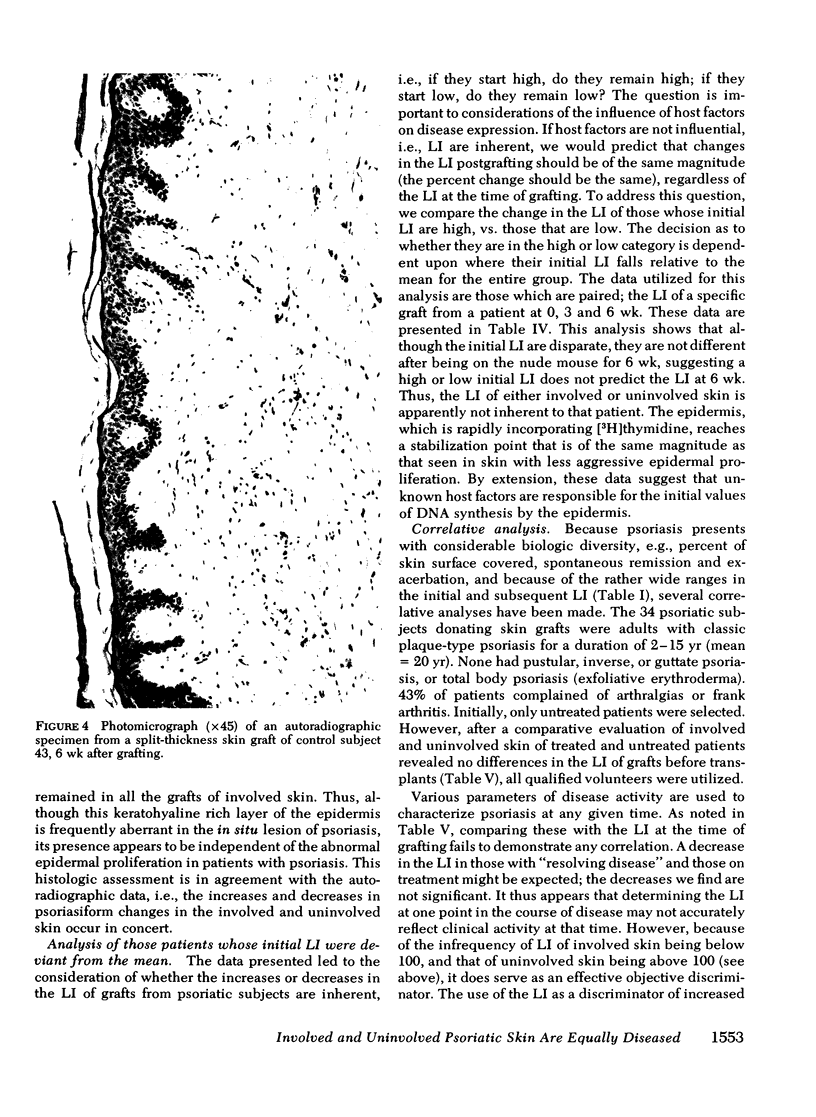
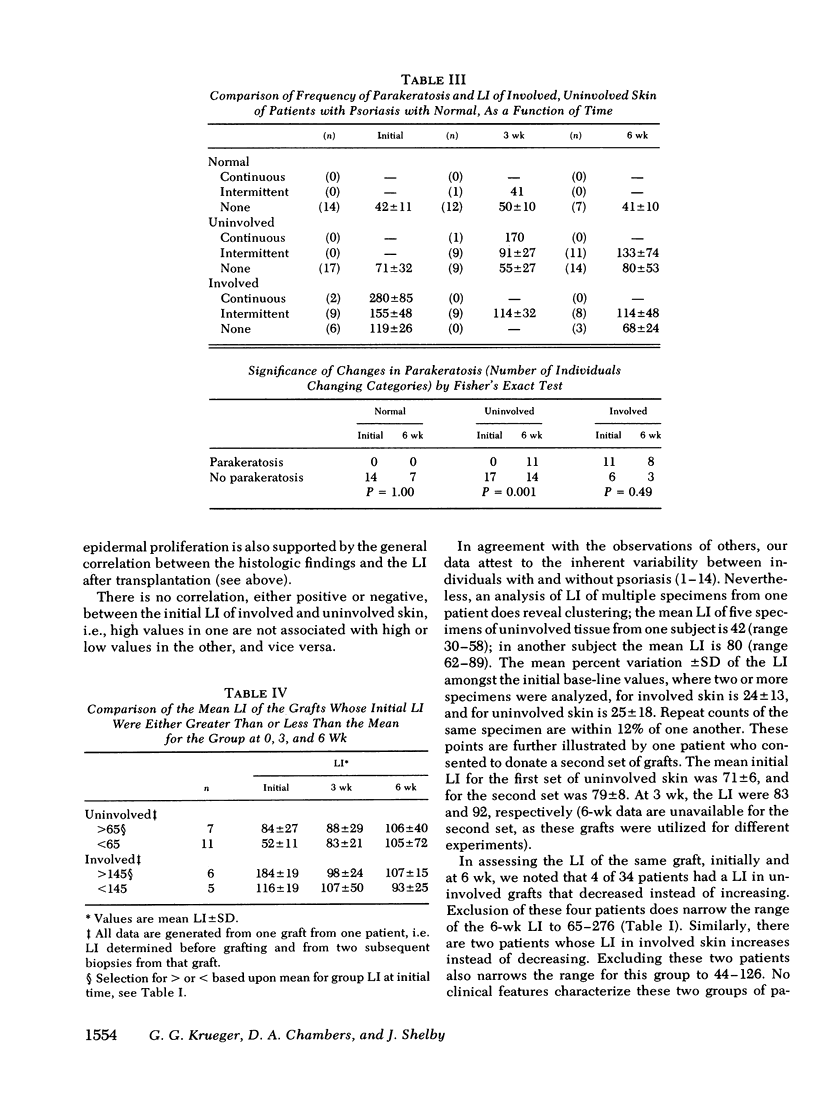
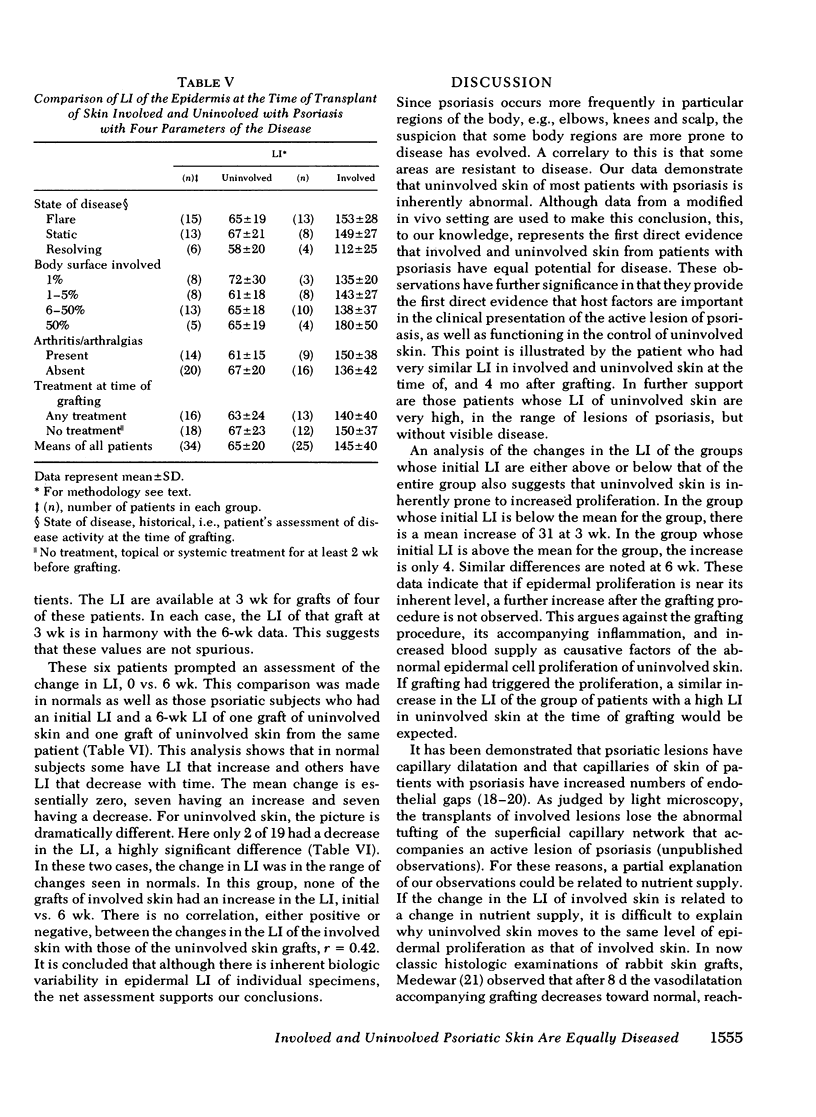
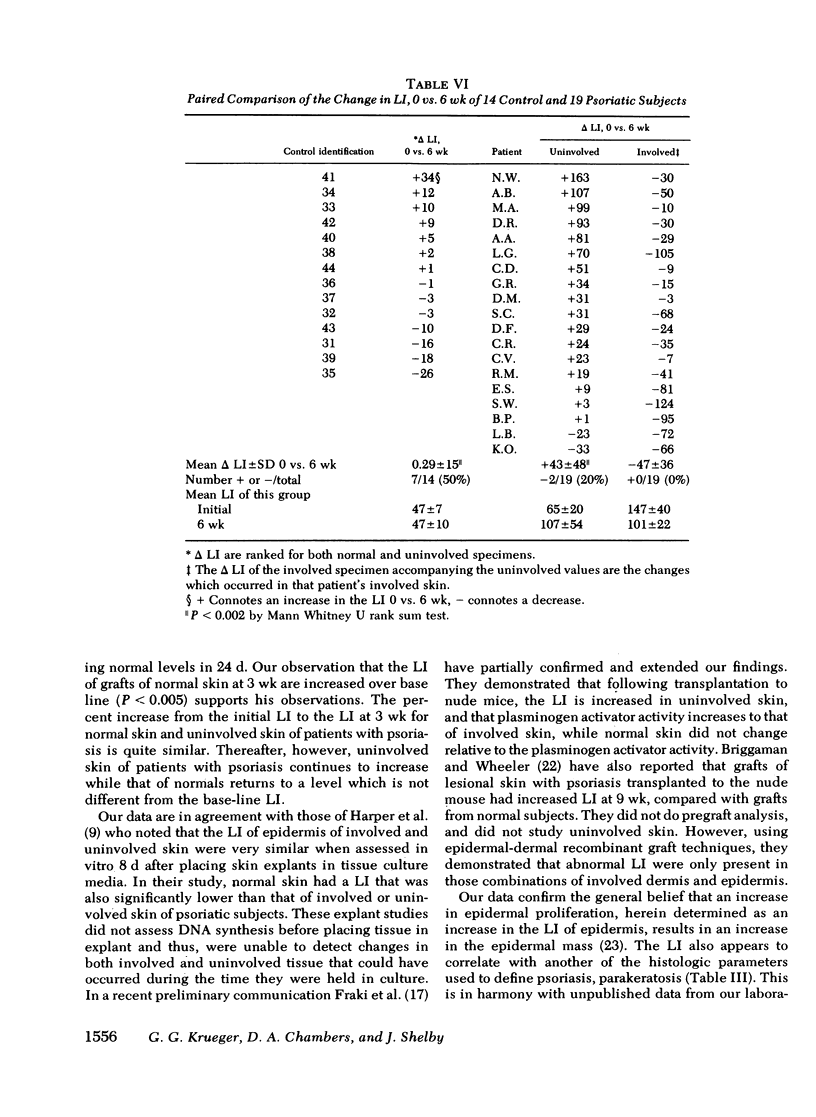
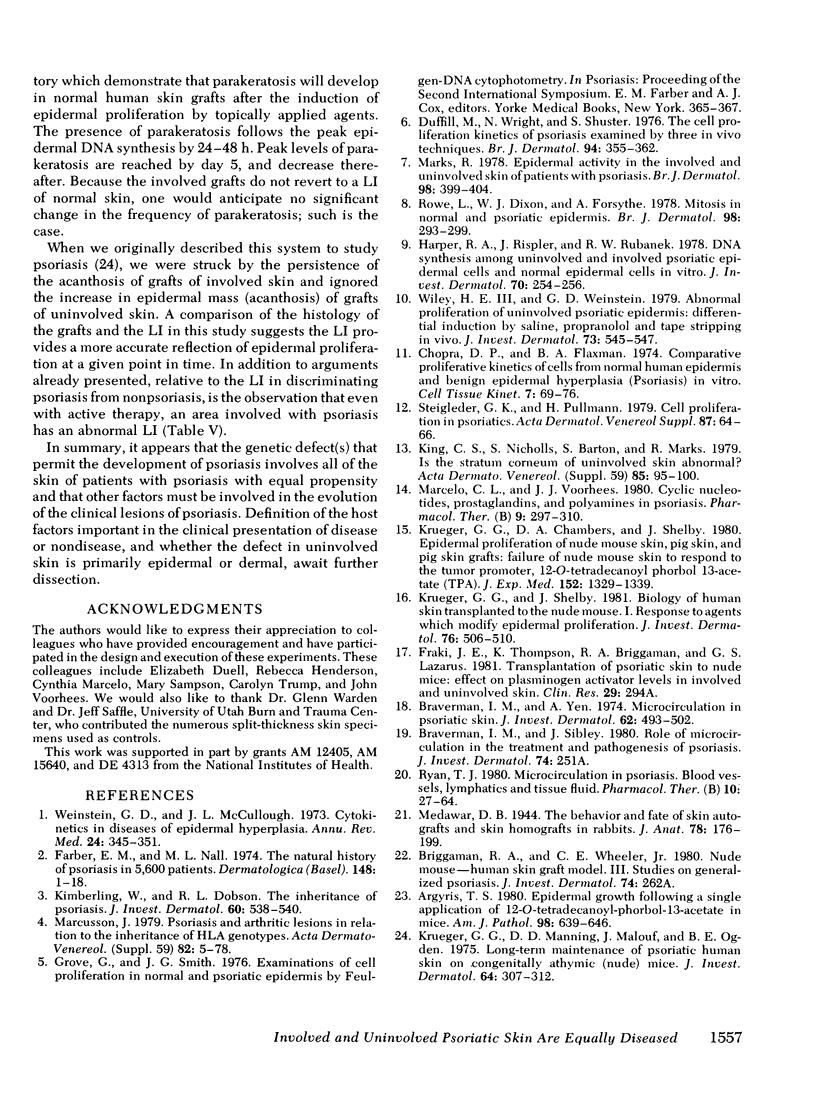
Images in this article
Selected References
These references are in PubMed. This may not be the complete list of references from this article.
- Argyris T. S. Epidermal growth following a single application of 12-O-tetradecanoyl-phorbol-13-acetate in mice. Am J Pathol. 1980 Mar;98(3):639–648. [PMC free article] [PubMed] [Google Scholar]
- Braverman I. M., Yen A. Microcirculation in psoriatic skin. J Invest Dermatol. 1974 May;62(5):493–502. doi: 10.1111/1523-1747.ep12681007. [DOI] [PubMed] [Google Scholar]
- Chopra D. P., Flaxman B. A. Comparative proliferative kinetics of cells from normal human epidermis and benign epidermal hyperplasia (psoriasis) in vitro. Cell Tissue Kinet. 1974 Jan;7(1):69–76. doi: 10.1111/j.1365-2184.1974.tb00400.x. [DOI] [PubMed] [Google Scholar]
- Duffill M., Wright N., Shuster S. The cell proliferation kinetics of psoriasis examined by three in vivo techniques. Br J Dermatol. 1976 Apr;94(4):355–362. doi: 10.1111/j.1365-2133.1976.tb06112.x. [DOI] [PubMed] [Google Scholar]
- Harper R. A., Rispler J., Urbanek R. W. DNA synthesis among uninvolved and involved psoriatic epidermal cells and normal epidermal cells in vitro. J Invest Dermatol. 1978 May;70(5):254–256. doi: 10.1111/1523-1747.ep12541398. [DOI] [PubMed] [Google Scholar]
- King C. S., Nicholls S., Barton S., Marks R. Is the stratum corneum of uninvolved psoriatic skin abnormal? Acta Derm Venereol Suppl (Stockh) 1979;59(85):95–100. [PubMed] [Google Scholar]
- Krueger G. G., Chambers D. A., Shelby J. Epidermal proliferation of nude mouse skin, pig skin, and pig skin grafts. Failure of nude mouse skin to respond to the tumor promoter 12-O-tetradecanoyl phorbol 13-acetate. J Exp Med. 1980 Nov 1;152(5):1329–1339. doi: 10.1084/jem.152.5.1329. [DOI] [PMC free article] [PubMed] [Google Scholar]
- Krueger G. G., Manning D. D., Malouf J., Ogden B. Long-term maintenance of psoriatic human skin on congenitally athymic (nude) mice. J Invest Dermatol. 1975 May;64(5):307–312. doi: 10.1111/1523-1747.ep12512256. [DOI] [PubMed] [Google Scholar]
- Krueger G. G., Shelby J. Biology of human skin transplanted to the nude mouse: I. Response to agents which modify epidermal proliferation. J Invest Dermatol. 1981 Jun;76(6):506–510. doi: 10.1111/1523-1747.ep12521231. [DOI] [PubMed] [Google Scholar]
- Marcelo C. L., Voorhees J. J. Cyclic nucleotides, prostaglandins and polyamines in psoriasis. Pharmacol Ther. 1980;9(3):297–310. doi: 10.1016/0163-7258(80)90021-2. [DOI] [PubMed] [Google Scholar]
- Marks R. Epidermal activity in the involved and uninvolved skin of patients with psoriasis. Br J Dermatol. 1978 Apr;98(4):399–404. doi: 10.1111/j.1365-2133.1978.tb06532.x. [DOI] [PubMed] [Google Scholar]
- Medawar P. B. The behaviour and fate of skin autografts and skin homografts in rabbits: A report to the War Wounds Committee of the Medical Research Council. J Anat. 1944 Oct;78(Pt 5):176–199. [PMC free article] [PubMed] [Google Scholar]
- Rowe L., Dixon W. J., Forsythe A. Mitoses in normal and psoriatic epidermis. Br J Dermatol. 1978 Mar;98(3):293–299. doi: 10.1111/j.1365-2133.1978.tb06156.x. [DOI] [PubMed] [Google Scholar]
- Ryan T. J. Microcirculation in psoriasis: blood vessels, lymphatics and tissue fluid. Pharmacol Ther. 1980;10(1):27–64. doi: 10.1016/0163-7258(80)90008-x. [DOI] [PubMed] [Google Scholar]
- Steigleder G. K., Pullmann H. Cell proliferation in psoriatics. Acta Derm Venereol Suppl (Stockh) 1979;87:64–66. [PubMed] [Google Scholar]
- Weinstein G. D., McCullough J. L. Cytokinetics in diseases of epidermal hyperplasia. Annu Rev Med. 1973;24:345–352. doi: 10.1146/annurev.me.24.020173.002021. [DOI] [PubMed] [Google Scholar]
- Wiley H. E., 3rd, Weinstein G. D. Abnormal proliferation of uninvolved psoriatic epidermis: differential induction by saline, propranolol, and tape stripping in vivo. J Invest Dermatol. 1979 Dec;73(6):545–547. doi: 10.1111/1523-1747.ep12541532. [DOI] [PubMed] [Google Scholar]



